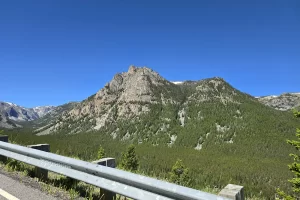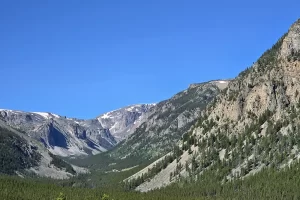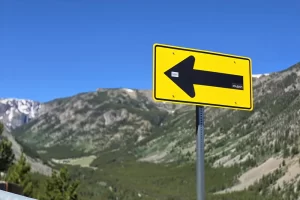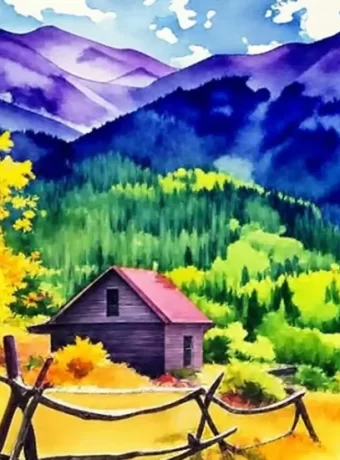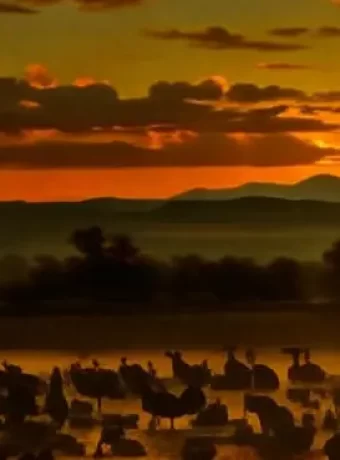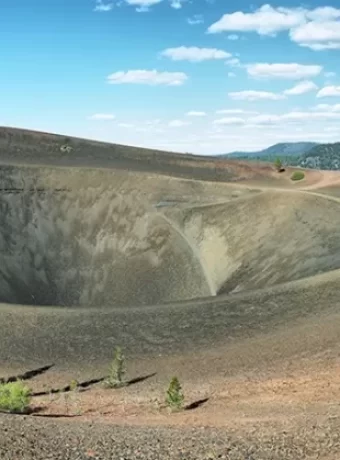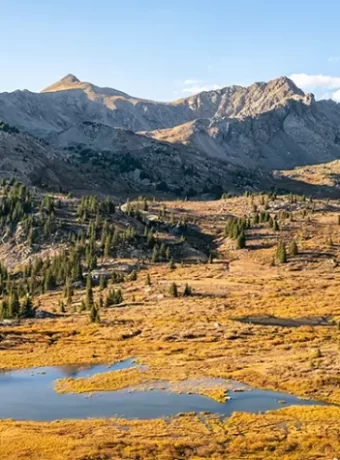History Red Lodge Montana and Beartooth Pass
History Red Lodge Montana and Beartooth pass – it’s a mouthful, but it’s a story that’ll make your jaw drop. I’m talking about a place so beautiful, so rugged, so full of tales that you’ll be telling your grandkids about it someday. But here’s the thing – most people don’t know the half of it. They drive through, snap a few pics, and think they’ve seen it all. But oh, they’re missing out. Big time.
See, the history of Red Lodge and the Beartooth pass is like a big, juicy novel – full of plot twists, colorful characters, and moments that’ll make you go “whoa.” And me? I’m here to give you the inside scoop. The stuff the guidebooks don’t tell you. The stories that’ll make you appreciate this slice of Montana paradise like never before. So grab a seat and get comfy, because we’re about to take a trip through time and space that you won’t soon forget.
Table of Contents

View from Rock Creek Overlook on Beartooth Pass.
History of Red Lodge, Montana
Red Lodge, Montana is a delightful town with roots stretching back to the late 1800s. Here, you can see where the old west meets modern life and feel the enduring spirit of frontier days.
Having spent countless hours wandering around Red Lodge and uncovering its history, I can tell you it’s a tale of grit, determination, and resilience.
Early Settlers and the Mining Boom
The history of Red Lodge is inextricably linked to the mining industry. In the late 1800s, coal was discovered in the area, and soon after, miners from all over the world flocked to Red Lodge in search of work and fortune.
Red Lodge quickly transformed into a lively town, bustling with saloons, brothels, and boarding houses on every corner. With the local mining industry booming, it earned the nickname “Pittsburgh of the West.”
Living in a mining town had its challenges. Work conditions were perilous, leading to numerous accidents. One such tragedy occurred in 1943 when an explosion at the Smith Mine killed 74 miners, making it one of Montana’s deadliest events.
Decline of Mining and the Rise of Tourism
As the years passed, the mining industry in Red Lodge began to decline. The once-thriving mines started to close, and the town’s population dwindled.
Red Lodge didn’t just disappear. It transformed itself into a tourist hotspot, drawing people in with its beautiful landscapes and fascinating history.
Red Lodge attracts visitors from around the globe who come to stroll through its charming downtown, hike in the Beartooth Mountains, and dive into its rich mining history at the Carbon County Historical Society and Museum.
As a longtime resident of Red Lodge area and Montana, I’ve seen firsthand how this community embodies resilience and grit. The rich history of our town showcases incredible tales of human endurance, which continue to inspire us all today.

Graphic Hoodie Hiking Fly Fishing Apparel
Salmon Fly Graphic Hoodie and Leggings are a UPF-50. Design for the river or trail. Outdoor Fly Fishing Apparel designed on the river and trail. Learn more Click Here.
View Playlist for Beartooth Pass, Red Lodge and other destination: https://www.youtube.com/feed/playlists
Exploring the Scenic Beartooth Highway
Craving a road trip that will leave you in awe? Drive along the Beartooth Highway. This stunning 68-mile stretch takes you through jaw-dropping scenery of the American West, with views so incredible you’ll be lost for words.
As someone who has driven the Beartooth Highway more times than I can count, I can tell you that it’s an experience you won’t soon forget. From the moment you start your journey in Red Lodge to the moment you reach Cooke City, Montana, you’ll be treated to a visual feast of snow-capped peaks, alpine lakes, and wildflower-filled meadows.
The Route and Its Challenges
The Beartooth Highway, also known as U.S. Highway 212, is not for the faint of heart. The road is narrow and winding, with extremely steep curves and sharp drop-offs that can be intimidating for even the most experienced drivers.
Don’t let that scare you off. Tackling the Beartooth Highway’s twists and turns is what makes it unforgettable. Each curve brings a mix of excitement and wonder that’s tough to put into words.
One of the toughest parts of this highway is the climb to Beartooth Pass, which stands at an impressive 10,947 feet. The road here is steep and narrow with hairpin turns that will get your adrenaline pumping. But once you reach the top, those breathtaking views make every tense moment worth it.
Breathtaking Views and Notable Landmarks
Take a drive on the Beartooth Highway for jaw-dropping scenery at every turn. As you wind your way through these majestic mountains, expect to see an array of wildlife and diverse plant life that call this untamed land home.
If you’re cruising down the highway, make sure to stop by Beartooth Lake. This gorgeous alpine gem lies at the foot of Beartooth Plateau and offers great opportunities for fishing and hiking. A picnic here is also a must. Don’t miss out when traveling through. I have driven and hiked 3 seasons of creative forest of constant flow of color.
Don’t miss the Clay Butte Lookout, a historic fire tower that gives you sweeping views of the Beartooth Plateau. It’s just a short hike from the highway and definitely worth every step.
Seasonal Closures and Maintenance
It’s important to note that a large portion of the Beartooth Highway is only open for a few months each year, typically from late May to mid-October. During the winter months, the road is closed due to heavy snowfall and dangerous conditions.
Summertime doesn’t guarantee clear roads; highways may still shut down due to bad weather or upkeep needs. Always double-check road status before embarking on your adventure.
No matter what difficulties arise or when it’s closed during certain seasons, people flock to drive along the Beartooth Highway because it’s so incredibly beautiful. It perfectly illustrates why we admire America’s western scenery and serves as a tribute to our natural world’s strength and endurance.
Experiencing the Beartooth Highway firsthand is something you won’t easily forget. The history of Red Lodge, Montana, and the rugged Beartooth Pass are closely linked, giving a real taste of America’s untamed frontier spirit.
Red Lodge, Montana’s rich history spans from its booming mining days to its current status as a charming tourist destination. The Beartooth Highway offers breathtaking views and thrilling drives, making it an unforgettable journey through the American West.
Beartooth Highway’s Connection to Yellowstone National Park
The Beartooth Highway offers more than picturesque mountain scenery in Montana and Wyoming. It plays a key role by connecting travelers to Yellowstone, one of America’s cherished national parks.
As someone who’s driven this route countless times, I can tell you that there’s nothing quite like the feeling of anticipation as you wind your way up the switchbacks, knowing that you’re about to enter a world of geysers, hot springs, and wildlife unlike anything else on Earth. Go on adventure Hike Yellowstone National Park, lots of experiences are out there.
The Northeast Entrance to Yellowstone, Gateway Communities: Cooke City and Silver Gate
The Beartooth Highway leads directly to the Northeast Entrance of Yellowstone National Park, near the small town of Cooke City, Montana. This entrance is the least visited of Yellowstone’s five entrances, due in part to its remote location and seasonal accessibility.
If you’re up for an adventure, the Northeast Entrance is your gateway to some of Yellowstone’s most breathtaking views. You’ll find yourself in Lamar Valley, known as “America’s Serengeti,” where wildlife roams freely and the scenery is unforgettable.
According to the National Park Service, the Northeast Entrance sees just 4% of Yellowstone’s total visitation, making it a great option for those looking to avoid the crowds.
Before entering Yellowstone National Park, visitors traveling the Beartooth Highway will pass through the small gateway communities of Cooke City and Silver Gate, Montana.
Tiny though they are, these towns offer a warm welcome to park visitors with their lodging options and dining spots. Travelers can find everything they need here before heading out on outdoor activities in the nearby Beartooth Mountains.
I’ve spent many a night in Cooke City, enjoying a cold beer and swapping stories with fellow adventurers after a long day of hiking or fishing in the nearby wilderness. There’s a sense of camaraderie here that you won’t find in larger, more developed gateway communities.
- starting up Beartooth Pass
- Looking up toward the back of Rock Creek Canyon Climbing Beartooth Pass going south from Red Lodge, Montana
- Lots of sharp corners on the Montana side of the pass.
- While crossing the Beartooth Pass in Montana watch for the many cyclist on the pass rood.
The Beartooth Highway as an All-American Road
The Beartooth Highway isn’t your average road. It’s been named an All-American Road, which is a special title given to the most beautiful and culturally important routes in the country.
Designation and Significance, Preservation Efforts and Partnerships
In 2002, they named Beartooth Highway an All-American Road, which is top-tier recognition by the National Scenic Byways Program. It now shares this elite status with other legendary drives such as Blue Ridge Parkway and Pacific Coast Highway.
To get this special recognition, a road has to have some truly amazing features that are important on a national level and can’t be found anywhere else. The Beartooth Highway hits the mark with its breathtaking views, fascinating history, and plenty of fun activities.
As the Federal Highway Administration notes, “The Beartooth Highway is surrounded by the Custer, Gallatin, and Shoshone National Forests. The Highway provides the only direct route from Red Lodge to Yellowstone Park.”
Keeping the Beartooth Highway in good shape is tough work. It takes a team effort from various agencies and groups, all pitching in to make sure this scenic route stays beautiful for years to come.
The Beartooth Highway is managed through a partnership between the Montana Department of Transportation, Wyoming Department of Transportation, U.S. Forest Service, and National Park Service. These agencies work together to maintain the road, protect its natural and cultural resources, and promote sustainable tourism.
Check out the Beartooth Scenic Byway Center in Red Lodge, Montana. It’s a cool spot where the Forest Service teams up with the City of Red Lodge and the local Chamber of Commerce. Here, you can find tons of info and interesting exhibits about Beartooth Highway and what’s around it.
I’ve been involved in preserving the Beartooth Highway for years, and let me tell you, it’s all about passion. We’re committed to safeguarding this amazing place so others can enjoy its beauty too. This highway isn’t just pavement; it’s an American gem worth every bit of attention we give.
Red Lodge Beartooth Travel Tip:
Drive the Beartooth Highway to experience breathtaking scenery and reach Yellowstone’s lesser-known Northeast Entrance. Enjoy local hospitality in Cooke City and Silver Gate before exploring America’s Serengeti, Lamar Valley. The highway is an All-American Road, requiring teamwork from various agencies to maintain its beauty and accessibility.
Outdoor Recreation Along the Beartooth Highway
The Beartooth Highway spans 68 miles of pure adventure. As it twists through the majestic Beartooth Mountains, you’ll find stunning views around every corner as well as countless hiking paths and peaceful alpine lakes to explore.
From hikers and campers to anglers and snow lovers, everyone finds joy on the Beartooth Highway. Ready to discover what fun lies ahead on this beautiful road?
Hiking and Camping
For those who love hiking, the Beartooth Highway is like hitting the jackpot. It opens up a ton of trails in the Custer, Gallatin, and Shoshone National Forests.
The Beartooth Lakes Trail ranks high on my list of favorite hikes. This moderate trek covers about six miles round trip and leads to several gorgeous alpine lakes. You can start your adventure at the trailhead close to the Top of the World Store, conveniently located just off the highway.
If you’re up for a challenge, the Granite Peak Trail should be on your list. At 12 miles round trip and reaching Montana’s highest point at 12,807 feet, this hike is no walk in the park. But trust me—the stunning views from the top make every step worth it.
If you’re planning to camp out for a night or two, there are lots of spots along the highway. One favorite is Beartooth Lake Campground with its 21 sites right by the lake’s edge.
If you’re up for a more rugged camping experience, check out Island Lake Campground. It offers 10 sites without any amenities but is conveniently close to the Island Lake Trailhead. This makes it easy to enjoy some hiking and fishing while you’re there.
Fly Fishing and Boating
If you’re an angler, the alpine lakes and streams along Beartooth Highway are your dream spot. These waters teem with trout, grayling, and mountain whitefish.
If you’re into fishing, Beartooth Lake should be on your list. It’s packed with healthy cutthroat trout and allows only non-motorized boats, ensuring peace and quiet all around.
If you’re into fly fishing, Rock Creek is another great spot to check out. This tributary of the Clarks Fork of the Yellowstone River teems with rainbow and cutthroat trout. Anglers flock here for its vibrant fish population. Stillwater River is just to the north with great brown trout and a wilderness experience close by.
If you’re planning to fish along the Beartooth Highway, be sure to obtain a fishing license from the Montana Department of Fish, Wildlife, and Parks or the Wyoming Game and Fish Department, depending on which state you’re in.
Winter Sports and Activities
The Beartooth Highway might close to vehicles during winter, but don’t let that stop you from enjoying its beauty. Grab your skis or snowboard and explore the area’s many trails.
Nestled close to the highway’s peak, Beartooth Basin Ski Area offers summer skiing at its best, often remaining open through July. Its challenging runs and lingering snow attract avid skiers and snowboarders eager to extend their season.
If cross-country skiing is your thing, the Beartooth Mountains are a paradise. Head to the Silver Run Trails near the highway’s northeast entrance for about 15 miles of groomed paths perfect for both classic and skate skiing.
Snowmobiling is a favorite winter activity in the Beartooth Mountains. The trail system here boasts over 100 miles of groomed paths, offering breathtaking views of the surrounding peaks.
I’ve spent countless hours soaking in the beauty and exploring all that Beartooth Highway has to offer. Whether you’re there during summer’s warm embrace or winter’s snowy blanket, there’s always something new and exciting to discover.
Beartooth Highway’s Impact on Local Communities
The beauty of the Beartooth Highway goes beyond its breathtaking vistas—it supports livelihoods in places like Red Lodge and Cooke City. With thousands visiting yearly due to this highway’s allure, many locals find work through tourism-related services.
Though economically beneficial, the Beartooth Highway comes with issues like managing tourism impacts on natural resources. Let’s examine both its significance for local economies along with ongoing initiatives to balance visitor influxes while conserving our surroundings.
Economic Benefits and Challenges
The Beartooth Highway draws many tourists to Carbon County, Montana, and Park County, Wyoming. A study by the National Park Service in 2016 found that visitors spent around $52.1 million in nearby communities, which helped support over 700 jobs.
Small towns like Red Lodge and Cooke City really benefit from the economic boost brought by tourism. The highway draws visitors who book rooms in local hotels, dine at nearby restaurants, and shop at small businesses.
Tourism along the Beartooth Highway is seasonal, which brings its own set of challenges for local communities. Many businesses thrive only during the summer when tourists flood in, creating a cycle of prosperity and hardship that’s tough to balance.
When the peak season hits, an influx of visitors can put a real strain on local infrastructure like roads, parking lots, and public services. To tackle this challenge, the Montana Department of Transportation teams up with their Wyoming counterparts to keep highways safe and accessible for everyone.
Balancing Tourism and Conservation
As more travelers flock to Beartooth Highway for its stunning views, finding a way to enjoy these benefits without harming the environment becomes crucial. It stretches through key conservation lands like Absaroka-Beartooth Wilderness along with Custer, Gallatin, and Shoshone National Forests.
To face these challenges head-on, local groups and land managers have joined forces. Their new initiatives promote eco-friendly tourism while working hard to lessen visitor impacts on nature.
To oversee the Beartooth Highway and its surroundings, a team effort between the U.S. Forest Service, National Park Service, and local folks resulted in the Beartooth Highway Corridor Management Plan.
The plan emphasizes the importance of visitor education, responsible recreation, and the protection of natural and cultural resources. It also identifies strategies for managing traffic, improving safety, and enhancing the visitor experience along the highway.
Local communities, businesses, and government agencies come together in the Beartooth Highway All-American Road Committee. Their mission? To keep this stunning highway recognized as a national scenic byway for everyone to enjoy.
This group strives to obtain financial support for maintaining highways while planning upgrades. They also put together educational programs along with interpretive resources that celebrate our local nature spots and historical landmarks.
Having spent years in communities along the Beartooth Highway, I know just how vital these collaborative efforts are. When we work together to manage both tourism and conservation effectively, we’re not only protecting an essential part of our economy but also safeguarding a beloved natural wonder for those who come after us.
The Beartooth Highway offers endless outdoor adventures. Hike, camp, fish, and ski in this stunning mountain paradise.
FAQs in Relation to History Red Lodge Montana and Beartooth Pass
What is the history of the Beartooth Pass?
The Beartooth Highway opened in 1936, cutting through rugged terrain to connect Red Lodge with Yellowstone National Park.
What is the history of Red Lodge?
Red Lodge began as a coal mining town in Montana. It shifted to tourism after mining declined.
What is the famous highway between Red Lodge and Yellowstone Park?
The famous route is Beartooth Highway, also known for its steep climbs and sharp curves across scenic landscapes.
How long does it take to drive the Beartooth Highway from Red Lodge to Cooke City?
The drive usually takes about two hours without stops, but plan extra time for sightseeing along this scenic byway.
Conclusion of History Red Lodge Montana
So there you have it – the History of Red Lodge Montana and Beartooth pass, in all its gritty, glorious detail. From the early settlers who carved a life out of this rugged landscape, to the modern-day adventurers who come seeking thrills and chills, this place has a way of leaving its mark on you.
But here’s the thing – the story’s not over yet. Every day, new chapters are being written in the history of Red Lodge and the Beartooth pass. And who knows? Maybe you’ll be a part of it someday. Maybe you’ll be the one telling stories around the campfire, or leaving your own mark on this incredible place.
So what are you waiting for? Pack your bags, gas up the car, and come see for yourself what makes the History of Red Lodge Montana and Beartooth pass so special. Trust me – you won’t regret it. And who knows? You might just find yourself falling in love with this place, just like so many others have before you.
From Red Lodge Explore History of Livingston Montana
Or fly fish a Livingston Spring Creek, Hike Absaroka-Beartooth Wilderness, and do a Montana Ghost Town Tour. Adventure Awaits.

